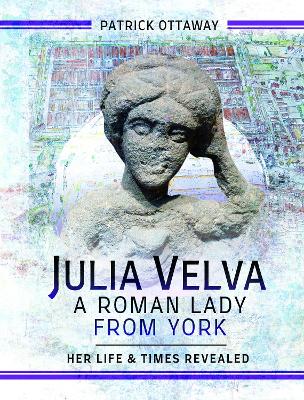Reviewed by annieb123 on
Julia Velva, a Roman Lady from York is an engaging look at the history of Roman York during the mid-second to mid-third century A.D. through the lens of two actual historical figures (Julia Velva herself and her heir Aurelius Mercurialis) and what their lives might have been like. Due out 31st March, 2021 from Pen & Sword Books, it's 336 pages and will be available in hardcover format.
The author, Dr. Patrick Ottaway, is an academic and this is what I would call a layman accessible academic treatise of Roman York, its culture, and history. As an academic work, it is *full* of tables and statistics and maps and minutiae (in a good way). The author definitely shows his work. I loved poring over the illustrations along with the exhaustive bibliography and full chapter notes and annotations. The notes and references are likely worth the price of admission for anyone interested in the subject and there's obviously been a swoon-worthy amount of time spent on research and resource gathering on the part of the author. He has taken care to explain new concepts and words in context (no Latin proficiency needed to access and enjoy the read).
I found the entire book quite fascinating. It is admittedly a niche book and will appeal to readers interested in cultural anthropology, but might not appeal to readers looking for an easy read. I found this one so engaging that I'm going back to try to acquire some of the author's other work; he is a gifted writer and brings ancient history to life.
Five stars. This is well and deeply researched and interesting.
Disclosure: I received an ARC at no cost from the author/publisher for review purposes.
Reading updates
- Started reading
- 13 March, 2021: Finished reading
- 13 March, 2021: Reviewed
